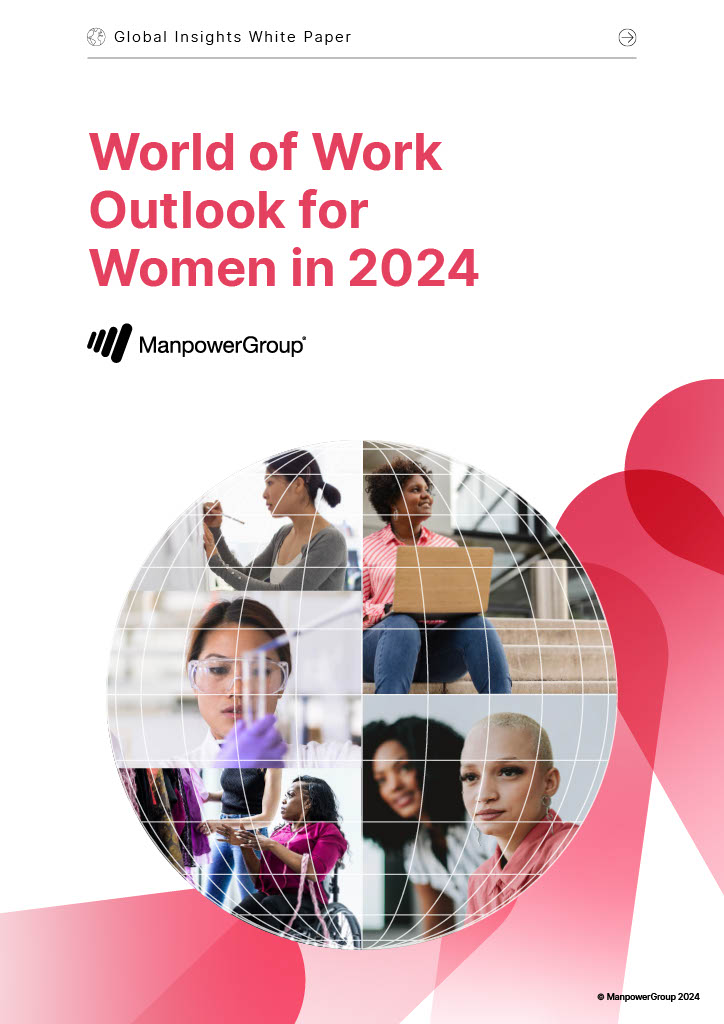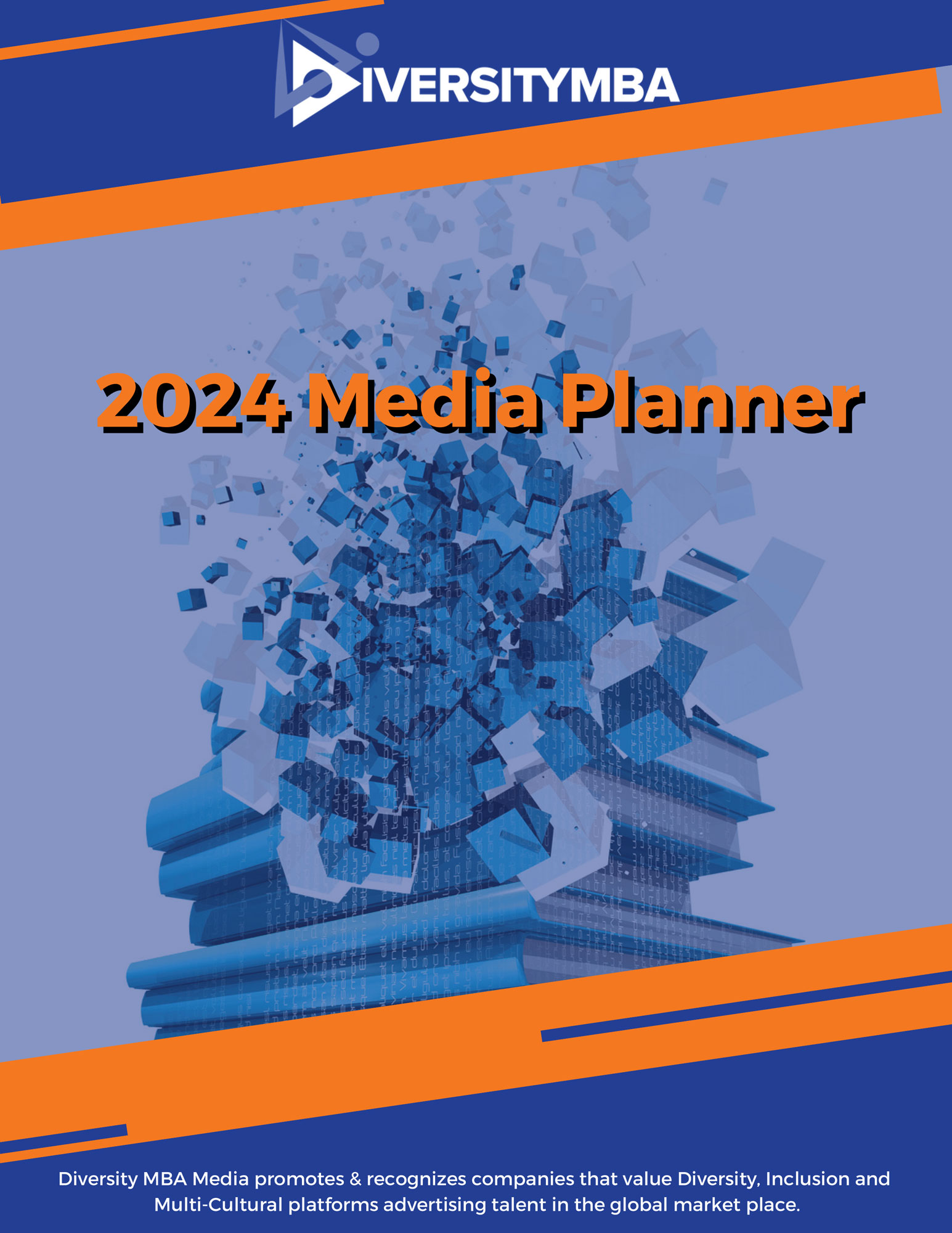Case for Diversity “D”
to be included in
ESG Equation
By
Pamela A. McElvane, MBA, MA, MCPC
Chief Engagement Officer (CEO)
P&L Group Holding Company
Diversity MBA Media
3I Research Institute
Diversity Learning Solutions
ABSTRACT
There is increasing evidence that the link between Environmental, Social, and Governance (ESG) and Diversity, Equity, and Inclusion (DE&I) is a foundational part of companies’ performance. Measuring diversity, sustainability and societal impact is becoming a central part of companies’ investment portfolios. Moreover, there is substantial empirical evidence that suggests diversity is a critical function in corporate performance results, therefore should be more than a consideration in the ESG equation.
The basis for this article is that “D” for Diversity should be a recognized as part of ESG when prioritizing considerations as companies do for governance, environmental and social investments. How companies perform in the execution of their diversity, equity, and inclusion initiatives and strategies, has direct impact on its retention and sustainability of its diverse workforce, and talent pipeline.
Keywords: Diversity, equity, inclusion, DEI, D&I, social responsibility, governance, sustainability, effectiveness, ethical investing
The Business Case
The inspiration to further investigate why diversity, the “D”, should be a part of ESG, came to me after I read Alan Fleischmann’s article, …”How investors can support diversity with their dollars.” Many investors already consider a wide-range of issues when considering how to deploy their funds, from how corporations respond to climate change to how they approach health and safety policies or worker protections”, says Fleischmann.
Current events are one of the many aspects investors make when considering risk. Therefore, we can assume that the social and racial issues coupled with the pandemic in the past year have heightened the national consciousness around systemic racism. The reality is that if we want to change the systems that drive inequities, bias, and prejudice, then considerations of race and diversity inherently should be included in the way we choose to invest.
From an investment perspective, financial and diversity research demonstrates the financial benefits to companies that emphasize diversity, equity, and inclusion (DE&I) as part of their business strategies. For example, the research from the DMBA Inclusive Leadership Index (ILI) identified more than 300 companies that made significant progress when they have advanced over 40 percent of women and people of color into leadership roles. Additionally, the Pipeline’s Women Count 2020 report found that FTSE 350 companies with executive committees comprised of at least 33 percent women had a net profit margin over 10 times greater than companies with no women on their committees.
It is important to understand how investors factor DE&I into their investment analysis. Companies have investment teams evaluating their portfolios for risk as it relates to environmental, social, and governance (ESG) issues. And it is the Diversity executives under the auspices of the human resource function, that are left to assess cultural environment of diversity and inclusion. Prudent companies, already assess DE&I as sector agnostic and include it under both social and governance pillars of the ESG equation.
In DMBAs 2021 ILI annual survey, we asked over 300 companies how and where they are factoring DE&I into their risk assessments of ESG. It was further validated that DE&I strategically drives corporate social responsibility (community investments); impacts supplier diversity (diverse supply chain); and drives board diversity (gender and diverse representation). Thereby, public commitments made by CEOs to comprehensively embed DE&I into their overall business strategy requires a shift in thinking. The results of their decisions will ultimately show up in their overall brand and reputation performance in the market.
ESG Investing
Understanding the basic principles of ESG investing further makes the case as to why DE&I should be a part of the equation. There are very specific elements in each category that require consideration from DE&I. So, the question remains, why not formalize it?
Environmental refers to investing in the guidance, improvement, and sustainability of our environment. It includes but not limited to the following concerns outlined below:
- Climate change,
- Biodiversity improvement,
- Energy efficient technology,
- Waste management,
- Water scarcity reduction, and
- Air and water pollution.
While there are so many more areas to engage in environmental investing, it’s the basic concept of caring for human conditions and humanity. It may appear the connection to DE&I is indirect, but the correlation to diversity and inclusion is the framework of our society and the link to humanity.
Social Investing refers to the principles or guidance to improve social sustainability as it relates to, but not limited to the concerns below:
- Human rights, health, and safety,
- Serving to fund underserved and under-represented communities and institutions, and community relations,
- Employee engagement and relationships, and
- Gender and racial diversity.
The inherent connections of social sustainability to diversity, equity, and inclusion are easier for companies to identify. For example, this is where employees engage in the activities that deliver the outcomes that make contributions to the community through employee involvement. Based on the 2020 DMBA ILI participating companies contributed more than $200B to community sustainability initiatives. This is more than a detached corporate initiative as it is an integrated part of the DE&I strategy execution. Thus concluding, DE&I heavily influences how decisions are made in social investing.
Corporate Governance refers to the interests and concerns that impacts shareholder values and alignment with company goals as it relates to, but not limited to concerns are listed below.
- Tax strategy,
- Execution remuneration,
- Donations, political lobbying, and philanthropy,
- Board diversity and structure,
- Codes of Business Conduct, and
- Risk and crisis management.
Corporate governance is how companies and organizations examine themselves for alignment through their policies and practices. Governance data has been compiled substantially longer than environmental, sustainability and diversity; such that, the criteria for good governance has also been discussed, just through different perspectives. Harvard researchers Gompers Ishii and Metrick comprised a governance index (G-Index 2003) that measured 24 governance provisions, however, did not include the impacts of diversity. Today, the G-Index has diversity implications around representation variations. However, the importance of the G-Index is that it ranks the good governance of companies.
A company that practices good governance can be characterized by a diverse board that is inclusive of women and people of color, transparency when it comes to financial reporting, and executive compensation that is tied to performance rather than arbitrary metrics.
Situation Analysis
We do, however, need to answer the question: why is ESG investing important for companies? There are many kinds of arguments regarding the benefits and challenges of ESG investing. The focus for this paper is on the key elements that align with diversity, equity, and inclusion.
According to Brian Chan, author of the Ultimate ESG Guide, companies with high ESG ratings are more crisis-resistant and achieve better performance marks on average than their peers. Equally important, if a company shares your values and delivers socially responsible initiatives, then the community becomes an asset. Nielsen’s research Diverse Intelligence Series (2015) found that nearly three quarters of millennials would pay a surcharge for sustainable goods and services. And that GenZs are the fastest growing conscious focused group who are more ethically driven in their purchases. As socially responsible purchasing becomes a critical factor in consumer decisions, it will require investors to pivot to manage future projects, that could favorably position them as catalyst for change.
Companies’ desire to have diversity, equity, and inclusion efforts transcend their organizational culture, but like anything else, it just does not happen without effort. Historically, companies have struggled on how to quantify the financial impact of DE&I, but it remains the most influx business function. This means, oftentimes, DE&I is like a pillar they pull out of the box when needed.
Unfortunately, companies’ make decisions that are influenced by the social environment and community disarray, primarily, to ensure there is no reflection on their reputation. Thereby, it is no surprise that discrimination and class action lawsuits have increased according to Equal Employment Office of Commission (EEOC). For this reason alone, it is a business imperative for diversity, equity, and inclusion to be a major consideration in the ESG equation.
Exploring why the “D” for Diversity should be a part of the ESG equation requires greater explanation. As mentioned earlier, Diversity is in closer alignment to the “S’ for Sustainability and to the “G” for Governance. With that said, let’s examine in greater detail the implications of sustainability and governance as it relates to diversity, equity, and inclusion. There are key indexes that rank and provide scores around the strength and weaknesses of how companies perform. Harvard chronicled many researchers that have developed criteria to measure the sustainability and governance performance of companies.
Understanding what sustainability means for businesses today has become increasingly important to all sizes of companies as investors take an approach more aligned with values of people and not just profit margins. DE&I has a direct alignment to sustainability through corporate socially responsible investing, influencing how talent management develops, retains and advance people of color and women, and creating equity within the practices, and policies.
The metrics for a long-term sustainable workforce are representation of diverse leadership and management, retention, low churn, equitable advancement of women and people of color, along with quality of culture. These are just a few of the key performance indicators (KPIs) that must keep pace with the ever-changing workforce.
The research from the DMBA Inclusive Leadership Index (ILI) provides further explanation and connection as to why Diversity “D” should be a-part of the ESG equation and not just a consideration. The DMBA ILI is conducted on an annual basis. Over the past decade more than 30,000 insights has been compiled on how DE&I influences the structure of how organizations implement and execute strategies. More than 400 companies participate on an annual basis answering 240 survey questions on their DE&I and talent management strategies. 70 percent of the companies are multi-nationals with an average employee base of 35,000; and 30 percent of the companies are large regionals with an average employee base of 5,000. According to the DMBA ILI below are key insights on how companies connect diversity to workforce and community sustainability and governance. These insights are inclusive but not limited to:
- 82 percent of companies participating in the index have both diversity and talent acquisition strategies directly aligned to the overall business goals of achieving a diverse workforce.
- 85 percent of companies measure the effectiveness of inclusion and engagement within their environments.
- 85 percent of companies train their workforce to support their principals of good conduct, respect of differences and more.
- 71 percent of companies assess bias within their organizations, yet 36 percent of companies are implementing strategies of change.
- Average employee retention among participants in the index is 83 percent in 2020. Indicator of workforce sustainability.
- In 2020 100 percent of participating companies’ CEOs have made a commitment to increase diversity, employee engagement and enhanced presence in the community.
- 68 percent of companies participate in minority national supply chain programs with an average investment of 8 percent of their overall investment.
- 87 percent of companies include incentives that influence behavior to execute diversity strategies.
- In 2020, approximately $150B was invested into underrepresented communities for the purpose of creating social and sustainable communities.
- 81 percent of company boards have diversity goals.
- 85 percent of boards have intentional initiatives on diversifying their boards.
- 89 percent of companies have DE&I strategies as part of their overall strategic objectives integrated across business functions.
- 87 percent of companies require leadership accountability to ensure DE&I initiatives are executed.
Recommendations & Considerations
What we know is diversity is a growing platform for inclusion for investors when considering strong sustainable environments and determining risk. Today, diversity executives are part of many conversations and decisions on how company strategies are executed. In fact, if it were not for diversity executives influence, the notion of inclusion, belonging, and equity in the workplace, simply would not occur beyond cognitive diversity.
The next step for companies is to create a space for diversity, equity, and inclusion executives to have a seat at the table on a regular basis to provide guidance, insights, and high-level influence on how investments for sustaining ESG can be demonstrated. In today’s environment Fortune 500 companies, large organizations, and the Biden Administration are reviewing the role of diversity in ESG investment decision making. Moreover, more indexes, like Bloomberg, US Russell 3000, FTS Exchange, and DOW are requiring companies to disclose how they are leveraging diversity initiatives to influence ESG investments.
In conclusion, here are some practical considerations so that diversity executives can begin to facilitate their journey to illustrate how DEI adds tremendous value as an integral part of the ESG equation:
- DE&I strategies are foundational to the execution of cultural inclusion within companies and organizations. DE&I executives can include the ESG analyst as part of their team when creating initiatives, so that they understand the practical side.
- DE&I leaders can include key metrics required by ESG analyst to be a part of their scorecard and visa-versa. Aligning metrics on both sides will create accountability.
- DE&I leaders with Chief Human Resource Officers (CHROs) can facilitate leadership retreat to help executives understand the impact and influence embedded diversity strategies have on the environment, sustainability, and governance.
- Establish board/management scorecard that includes key initiatives for diversity, equity and inclusion among policies and governance for the board of directors to adhere to. Leverage existing momentum of diversity on boards as key indicator for success that is a part of ESG reporting.
BIBLIOGRAPHY
Chan, Brian, The Ultimate Guide (2021); Diversity and Social Impact made Easy https://diversity.social/ESG-investing.
Executive Matters, Process PA Governance (March 11, 2020) The Four Ps of Corporate Governance.
Fleischmann, Alan H.H. CEO of Laurel Strategies, Inc. (June 11, 2020) Turning ESG into ESGD: How investors can support diversity with their dollars.
Herold, Hannah, ESG Analyst, ESG and Investment Stewardship Team, American Century Investments (January 20, 2021) How Diversity, Equity & Inclusion Inform ESG.
https://jdsupra.com/legalnews/sustainability and ESG/
McElvane, Pamela A., MBA, MA, Founder of Index, (data collection 12/31/2019) 2020 Diversity MBA Inclusive Leadership Index Benchmarking Report, annual application; 400 companies participating in primary research on annual basis; completing 240 question survey on the intersection of diversity, equity and inclusion and talent advancement strategies. www.diversitymbamagazine.com/methodology
Skadden, Arps, Slate, Meagher & Flom LLP & Affiliates, Kathryn Gamble; (January 11, 2021); Governance Factor Beyond the Board; (Retrieved from google scholar),
Tang, Kelly, Director Global Research & Design, Dow Jones, (March 14, 2018); Exploring the G in ESG: Governance in Greater Detail – part 1. https://www.spglobal.com/en/research-insights/articles/









